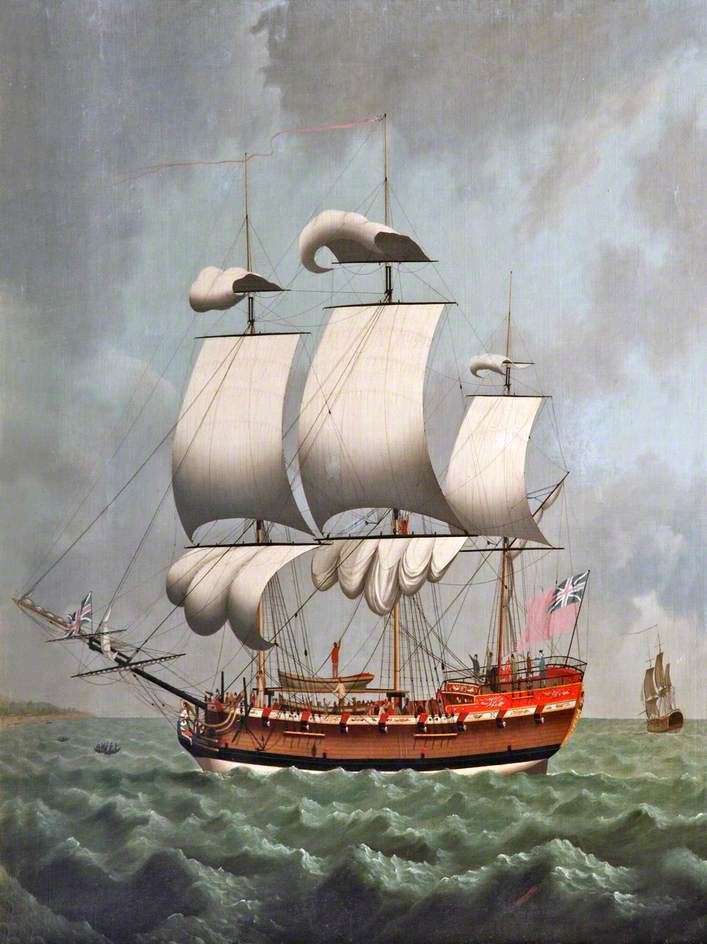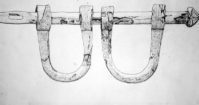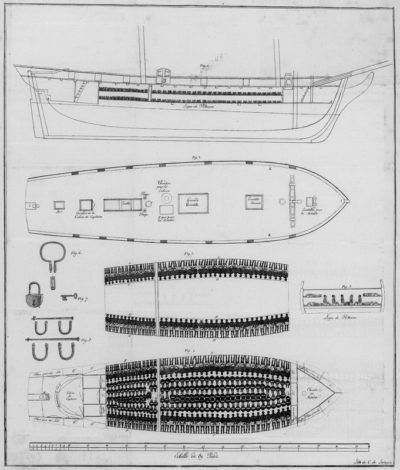
19 Jun The voyage of a slave ship – by the numbers.
“With the help of God, we are undertaking to go from Vannes, whence we were outfitted, to the coast of Guinea in the ship Diligent belonging to the brothers Billy and Mr. La Croix, our outfitters and from thence to Martinique to sell our blacks and make our return to Vannes.” Diary of Robert Durand, 1731.

The 1731 expedition of the French ship the Diligent was not remarkable by the standards of the day. It was one of over 17,000 slaving voyages during the eighteenth century – a tiny part of the transatlantic competition between France, Britain, Holland and Portugal to dominate the West African slave trade. The Diligent did not experience a slave mutiny, or encounter pirates, or other possible dangers. What is unusual about the expedition is the survival of the private journal kept by the ship’s First Lieutenant, Robert Durand. Durand was twenty-six years old and this was his first trip to Africa. Whether it was from his own curiosity, or a desire produce as rigorous an account of the trip as possible, in the 113-page journal Durand recorded in meticulous detail every aspect of a slave trading voyage. Beyond the introduction, seeking a blessing from God for the expedition, the journal is a dispassionate, methodical chronicle of a typical transaction in the business of buying and selling human beings. A business which destroyed the lives of 11 million captives. A business which required the vast, relentless application of terror, brutality and humiliation to prosper. A business which relied on the collaboration of politics, economics and contradicting moralities on three continents. What follows are a few numbers from the 1731-1732 voyage of the Diligent.
- 15 months – the duration of the journey – Vannes, France to West Africa to Martinique and back to Vannes.
- 69 feet long, 21 feet wide – size of the Diligent.
- 8 cannons, 55 muskets, 18 pistols, 20 swords, 2 swivel guns – weapons for the ship’s 37 man crew.
- Cargo loaded at Vannes to be traded for slaves:
- 90 bars of Swedish iron
- 16 cases of Dutch smoking pipes
- 900 kegs of French brandy – 8 kegs of brandy could buy 1 male slave, 4 could buy one female slave.
- 200 flintlock rifles
- 40 barrels of gunpowder
- 1 barrel of flint
- 7050 pounds of cowry shells – used as ballast and currency
- 150 slave irons – manufactured in Nantes, France. One iron was designed to lock two slaves together, so 150 irons could hold 300 slaves.
- 256 slaves – bought in Jakin, West Africa to be sold in Martinique.
- 66 days – voyage between Jakin and Martinique. 9 slaves and 4 crew members died.
- 2 feet – distance between sleeping platforms in male slave section of the ship.
- 1 accordion player. Brought to accompany evening exercise session during which shackled slaves were forced to “dance” to prevent muscle atrophy.
- 3 – serving of water allotted per day per captive.
- 2 – times per week each captive was bathed by having cold seawater poured over them.
- 250 barrels of sugar, 23 bales of cotton, 18 barrels of rocou (used to dye cloth) – items bought traded for or bought with proceeds from slaves, and sailed back to France.

Resources:
The Diligent, by Robert Harms
www.qaronline.org/blog/2017-03-13/day-slave-ship-sets-sail
Feature image: ‘A Liverpool Slave Ship’ by William Jackson


